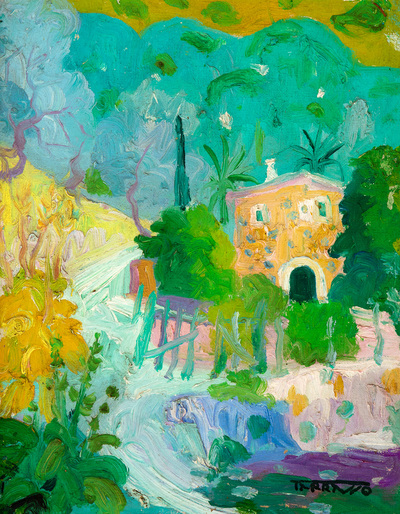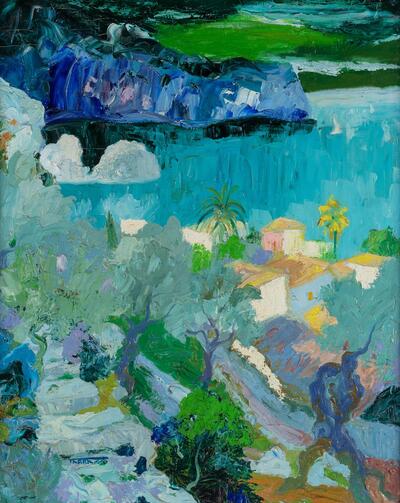The Mallorcan landscape as inspiration
Works such as “Cala Lluch Alcari” by Tarrassó show the undoubted attraction that the Mallorcan landscape has exerted in the artistic panorama of the early twentieth century.
The landscape, in its broadest conception, has represented an unlimited source of inspiration and creativity for artists. An immense workshop where unique conditions come together to respond to their artistic needs. Its changing condition, its lights and shadows, its silences and murmurs, continually rediscover it for us, making it a perfect setting to show some of the great questions that have marked the history of art. It is not surprising, then, that landscape has become one of the main creative engines of the great masters of painting, giving rise to some of the greatest works of all time.
In this regard the paradisiacal landscapes that the island of Mallorca offers us have been the scenery where many artists, writers and poets have found an inexhaustible source of inspiration. Especially with the arrival of the 19th century Mallorca became one of the favorite destinations for artists who, fleeing from the phenomenon of the Industrial Revolution, sought in Mallorca that idyllic vision of exuberant and unspoiled nature that romanticism had fostered. As key pieces in a whole generation of artists who settled in Mallorca between the late nineteenth and early twentieth centuries, the light and the Mediterranean landscape will be the living testimony of the new directions that painting would take from then on.
In fact, we only have to think of the great Catalan landscape painters such as Anglada Camarasa Joaquim Mir, Eliseo Meifren or Tarrassó whose respective stays on the Balearic Island transformed forever their way of understanding landscape painting, allowing them to find their own language, modern and original, full of light, color, sensations and shapes that gave life to some of their best and most valued creations.
In all of them, we can see how one of the most striking aspects of their Mallorcan period is the particular use they will make of color. In the case of Tarrassó this aspect is especially visible thanks in part to his stay in Paris, where the chromatic Fauve exaltation was engraved in his retina. In his continuous experimentation with the landscape and its colors, Tarrassó visited Mallorca for the first time in 1935. From then on, he would be captivated by the expressive possibilities that his natural landscape offered him.He established a strong bond that led him to develop a large part of his production on the island. This is the case of the oil on tender “Cala Lluch Alcari” whose landscape transmits the impetuous force of nature and the telluric protagonism of the island through the power of a light converted into color spots as energetic and courageous as deeply sensory. Your artistic personality marked by a deep obsession for chromatism is transformed in works like the present one, in bursts of vitality where the architectures of his leafy landscapes appear completely integrated in a harmonious but wild nature. In the same way, mountains, sky and sea merge in an endless number of vigorous tones and thick spatulate with which it builds a certain depth and introduces us to a fully autonomous setting.
As the impressionist master August Renoir said, “I like the painting that makes me want to walk in it”. And it is precisely for this reason that in front of Tarrassó’s work we feel conquered.







